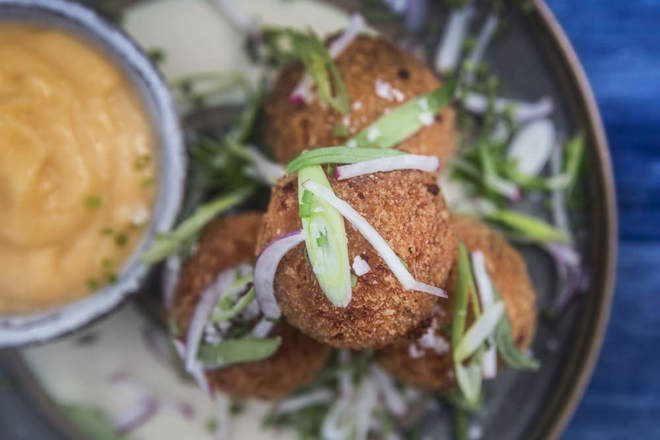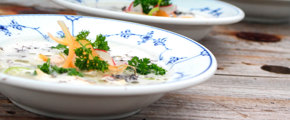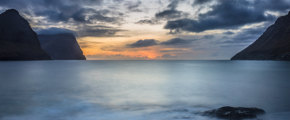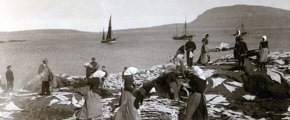Saithe (Coley, Atlantic pollock)
Saithe is known by a number of different names, including coalfish, coley and Atlantic pollock. When raw, its flesh has a greyish colour compared with other so-called white fish, but when cooked, it turns a clear white. Many prefer cooking with saithe due to its characteristic rich and fishy flavour.
The saithe is a codfish, with similarly firm and flaky flesh. Its firm texture makes the saithe easy to handle and, like other white fish, there are many different ways to prepare it. Its rich fishy flavour makes the saithe ideal for spicy dishes and dishes with strong and full flavours. Saithe is easy to deep fry and is one of the best fish to use for fishcakes and croquettes.
Saithe is often overlooked due to the darker colour of its raw flesh, even though it becomes lighter after cooking.
The taste is more characteristic than with other white fish and saithe has a distinctive flavour and a more concentrated taste of fish. This is why saithe is often the preferred choice for those wanting a rich taste of fish. Saithe is also often cheaper than cod and haddock, making it both an economical and quality choice of fish.
Saithe is also very healthy, being rich in protein, vitamin D, vitamin B and selenium.
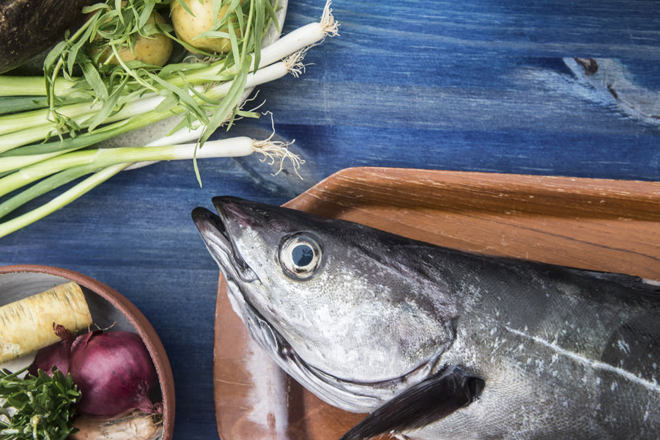
Try out Faroese chef, Gutti Winther’s recipe for fish croquettes made with saithe.
Many different names
Saithe (Pollachius virens) is sold under many different names. In the United Kingdom, it is called saithe, coley or coalfish, while in North America it is known as Atlantic Pollock.
In Germany it is called Seelachs or Köhler, in Poland it is czarniak and in Russia it is saiga or galija. In Spanish it is called a palero or bacalao perro and in French it is called lieu noir or colin noir. In Scandinavia it is called sej or sei, but in Finland it is called seiti or kuijan. In Iceland it is known as usfi and in the Faroe Islands it is upsi.
Biology
Saithe is a codfish with three dorsal fins and two posterior fins. It has a darker colour on the back, either charcoal or a blueish black, which gradually turns lighter towards the stomach, with a white stripe across their sides. A saithe can grow up to 130 cm in length but is most commonly somewhere between 55 – 120 cm when caught.
Saithe is both a demersal and a pelagic fish and can be found anywhere between the ocean surface and a depth of 450 metres. Normally, however, saithe are found at depths of between 75 and 200 metres.
In the waters of the Faroe Islands, saithe mature close to the shore and then head out to sea when they are around 3 years old and 40 cm long. The saithe is a shoaling fish and large numbers can gather in shoals where there is plenty of food. A young saithe eats crustaceans and small fish, such as sand eel and sometimes spawn, while the mature saithe eats krill and small fish, such as Norwegian pout and blue whiting.
Saithe, or Atlantic pollock is, despite similarities, not the same as an Alaskan pollock (Gadus chalcogrammus), also known as walleye pollock. The pollack (Pollachius pollachius), also called European Pollock, is also similar to the Atlantic pollock, but is thicker with a bowed white stripe on the side, while the Atlantic pollock has a straight stripe.
The Atlantic pollock is larger than the Alaskan pollock, which has a spotted back, while the Atlantic pollock has a uniform coloured back. The Atlantic pollock has a darker flesh, with a more powerful flavour and a higher concentration of Omega-3 fatty acids. This makes the Atlantic pollock the best choice of pollock for a rich fish flavour.
The Faroese mostly fish for saithe in the waters around the Faroe Islands and use line fishing and trawls.
